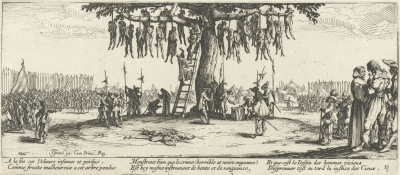The Battle of Ltzen, fought on 16 November 1632, is considered one of the most important battles of the Thirty Years War. A combined Swedish-German army led by Gustavus Adolphus narrowly defeated an Imperial force under Albrecht von Wallenstein. Both sides suffered heavy casualties, while the dead included Gustavus.
The first part of the battle featured a series of frontal attacks by the Swedes, which nearly succeeded before being repulsed by a cavalry charge led by Pappenheim. While trying to reform his shattered infantry, Gustavus was killed in a skirmish with Imperial troops, but his subordinates rallied their men and supported by close range artillery fire overran the Imperial centre just before nightfall. Wallenstein withdrew in good order although he abandoned his wounded, many of his guns and most of his supply train.
Despite the loss of their king, the Swedes continued the war under the direction of Axel Oxenstierna and formed the Heilbronn League with their German allies in April 1633. Backed by French subsidies, the coalition defeated an Imperial army under von Gronsfeld at Oldendorf in July. Wallenstein's alleged failure to support his colleague and rumours he was contemplating switching sides led to his removal and assassination by Imperial agents in February 1634.
The Thirty Years' War was a conflict fought largely within the Holy Roman Empire from 1618 to 1648. Considered one of the most destructive wars in European history, estimates of total deaths caused by the conflict range from 4.5 to 8 million, while some areas of Germany experienced population declines of over 50%. Related conflicts include the Eighty Years' War, the War of the Mantuan Succession, the Franco-Spanish War, and the Portuguese Restoration War.
Until the 20th century, historians considered it a continuation of the German religious struggle initiated by the Reformation and ended by the 1555 Peace of Augsburg. This divided the Empire into Lutheran and Catholic states, but over the next 50 years the expansion of Protestantism beyond these boundaries gradually destabilised Imperial authority. While religion was a significant factor in starting the war, scholars generally agree that its scope and extent was driven by the contest for European dominance between Habsburgs in Austria and Spain, and the French House of Bourbon.The war began in 1618 when Ferdinand II was deposed as King of Bohemia and replaced by Frederick V of the Palatinate. Although the Bohemian Revolt was quickly suppressed, fighting expanded into the Palatinate, whose strategic importance drew in the Dutch Republic and Spain, then engaged in the Eighty Years War. Since ambitious external rulers like Christian IV of Denmark and Gustavus Adolphus of Sweden also held territories within the Empire, what began as an internal dynastic dispute was transformed into a far more destructive European conflict.
The first phase from 1618 until 1635 was primarily a civil war between German members of the Holy Roman Empire, with external powers playing supportive roles. After 1635, the Empire became one theatre in a wider struggle between France, supported by Sweden, and Spain in alliance with Emperor Ferdinand III. This concluded with the 1648 Peace of Westphalia, whose provisions included greater autonomy within the Empire for states like Bavaria and Saxony, as well as acceptance of Dutch independence by Spain. By weakening the Habsburgs relative to France, the conflict altered the European balance of power and set the stage for the wars of Louis XIV.

1632Nov, 16
Thirty Years' War: Battle of Lützen is fought, the Swedes are victorious but King Gustavus Adolphus of Sweden dies in the battle.
Choose Another Date
Events on 1632
- 22Feb
Dialogue Concerning the Two Chief World Systems
Galileo's Dialogue Concerning the Two Chief World Systems is published. - 16Nov
Battle of Lützen (1632)
Thirty Years' War: Battle of Lützen is fought, the Swedes are victorious but King Gustavus Adolphus of Sweden dies in the battle.

 English
English  español
español  français
français  português
português  русский
русский  العربية
العربية  简体中文
简体中文 